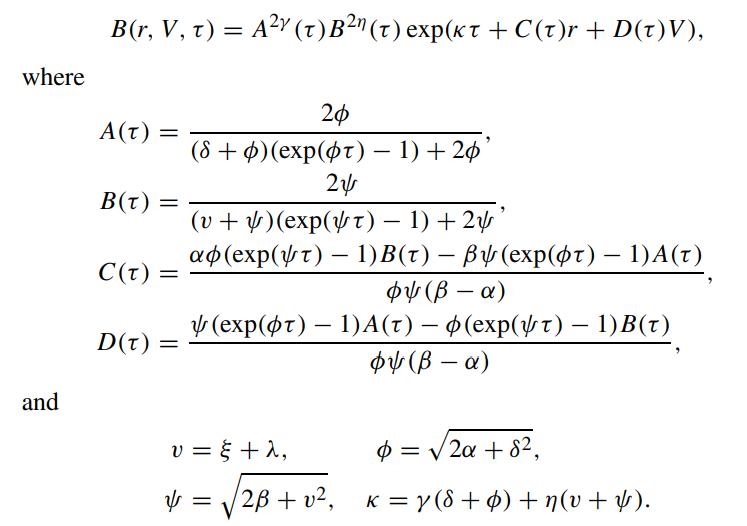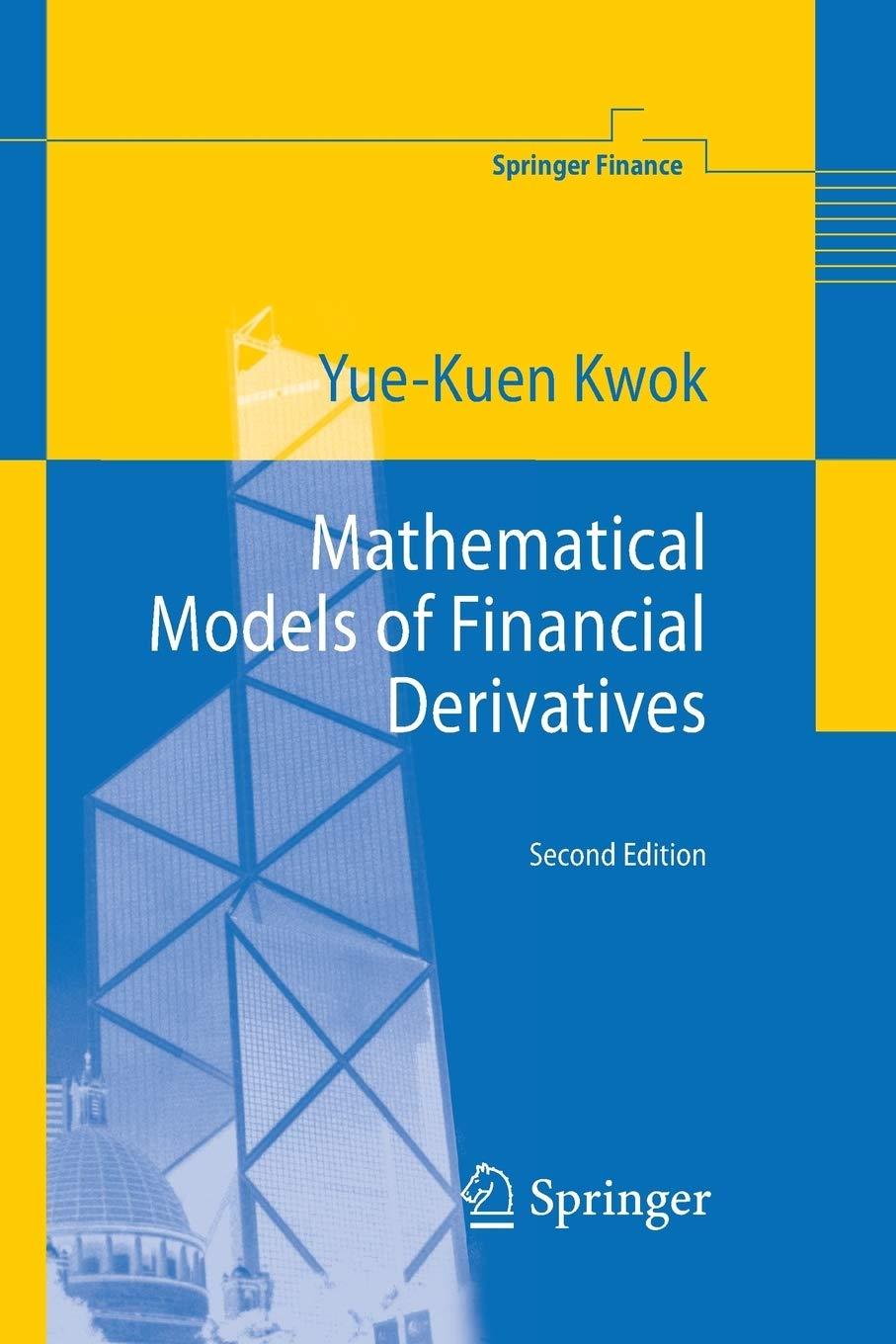For the two-factor CIR model proposed by Longstaff and Schwartz (1992), the short rate r(t) is defined
Question:
For the two-factor CIR model proposed by Longstaff and Schwartz (1992), the short rate r(t) is defined by

where α and β are positive constants, and α = β. Under the risk neutral measure, the risk factors x and y are governed by
 where Z1 and Z2 are uncorrelated standard Brownian processes. Let V denote the instantaneous variance of changes in the short rate.
where Z1 and Z2 are uncorrelated standard Brownian processes. Let V denote the instantaneous variance of changes in the short rate.
(a) Show that

(b) Using Ito’s lemma, show that the dynamics of r and V are governed by

Note that r and V together form a joint Markov process.
(c) Show that r has a long-run stationary (unconditional) distribution with mean
![and variance E[r] var(r) = + + 282 22](https://dsd5zvtm8ll6.cloudfront.net/images/question_images/1700/6/2/7/966655d85fe4fafa1700627963026.jpg) Similarly, show that V also has a stationary distribution with mean
Similarly, show that V also has a stationary distribution with mean
![and variance ELVI-/+ E[V] = var(V) = 'n + 282 22](https://dsd5zvtm8ll6.cloudfront.net/images/question_images/1700/6/2/7/984655d86105dfc21700627981038.jpg)
(d) Let B(r,V,τ) denote the price function of a unit discount bond with τ periods until maturity. Show that
 (e)
(e) 
Step by Step Answer:






